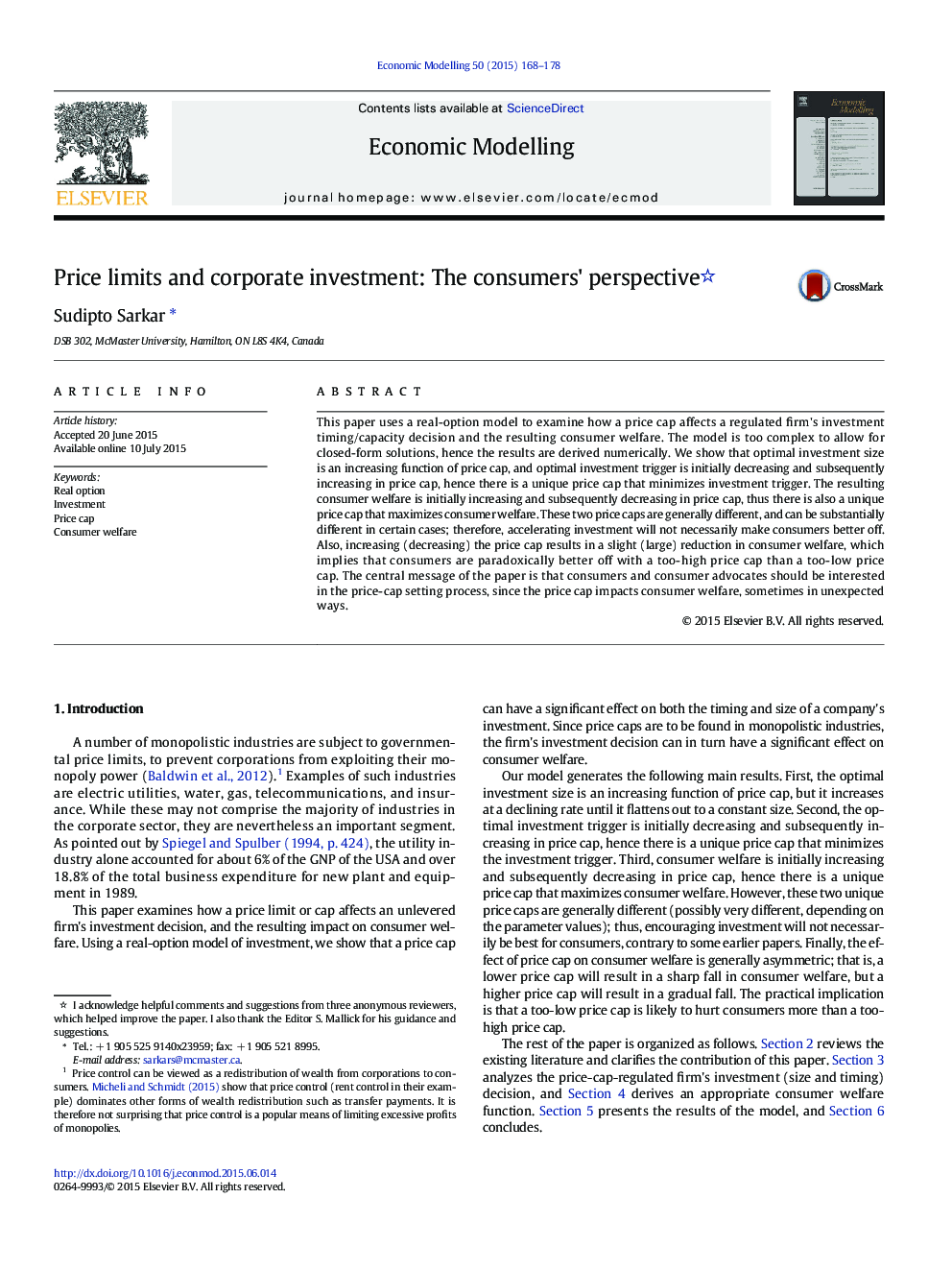| Article ID | Journal | Published Year | Pages | File Type |
|---|---|---|---|---|
| 5053438 | Economic Modelling | 2015 | 11 Pages |
â¢We examine how price limit affects corporate investment and consumer welfareâ¢Consumer welfare is generally an inverted-U shaped function of price capâ¢The welfare-maximizing price cap is different from the investment-maximizing oneâ¢The effect of price cap on consumer welfare is asymmetricâ¢A too-low price cap will hurt consumers more than a too-high price cap
This paper uses a real-option model to examine how a price cap affects a regulated firm's investment timing/capacity decision and the resulting consumer welfare. The model is too complex to allow for closed-form solutions, hence the results are derived numerically. We show that optimal investment size is an increasing function of price cap, and optimal investment trigger is initially decreasing and subsequently increasing in price cap, hence there is a unique price cap that minimizes investment trigger. The resulting consumer welfare is initially increasing and subsequently decreasing in price cap, thus there is also a unique price cap that maximizes consumer welfare. These two price caps are generally different, and can be substantially different in certain cases; therefore, accelerating investment will not necessarily make consumers better off. Also, increasing (decreasing) the price cap results in a slight (large) reduction in consumer welfare, which implies that consumers are paradoxically better off with a too-high price cap than a too-low price cap. The central message of the paper is that consumers and consumer advocates should be interested in the price-cap setting process, since the price cap impacts consumer welfare, sometimes in unexpected ways.
